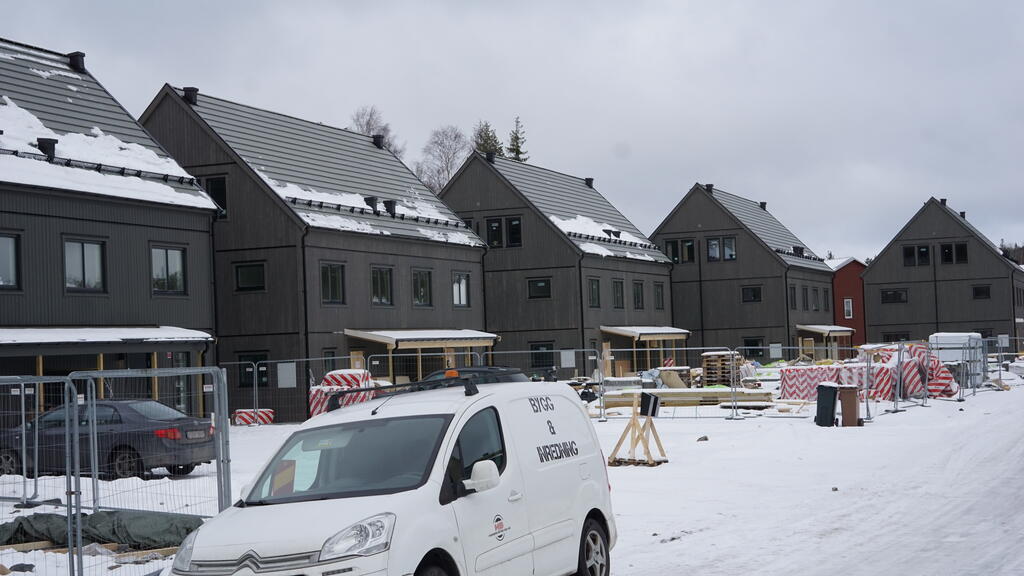The importance of digitalization in order to increase the circular flows of building materials
The project "Resource-efficient circular flows of construction materials supported by efficient data sharing" is about preparing tests of digititalization to minimize transportation of construction materials despite increased material fractions. The project is a prestudy with an ambition to take action in stage two. Both projects are carried out within Vinnova's call "Building for the future! Innovation for a sustainable construction and civil engineering sector".

There is a vital need to increase circularity (recycling and reuse) of building materials, in order to reduce climate impact. However, this requires a shift from today's linear to circular flows.
The circular flow, which the industry needs to change to, means that leftover or discarded material from construction projects should be seen as a material bank and not as waste, and make it possible to resue the material at other construction projects.
Project idea
In order to switch to circular flows, it needs to be significantly easier to know where materials are, to be able to prove reduced emissions from transport and reduced costs for handling, sorting and storing materials. One of the main obstacles for the conversion is the inflow and outflow of materials and goods at construction sites. This is partly due to a lack of space, but also due to lack off business models and regulations to create a secondary market for recycling or reusing building materials.
This prestudy focuses on three main questions:
1. how efficient movements and mobility can enable circular flows of building materials
2. which system support is required to ensure stable and efficient data flows for materials
3. propose concrete logistics pilot projects in a real environment to enable the development of new solutions and business models which promotes circular construction logistics.
Background
The construction industry is Sweden's largest waste producer and accounts for approximately 14.2 million tonnes of waste. This corresponds to approximately 40 percent of Sweden's waste, excluding mining waste. The EU's strategy is to move towards increased circularity by moving actors up the waste ladder. The circular flow means that materials that were previously thrown away or considered unusable must be disposed of and construction sites must be seen as material banks that supply other construction projects with materials.
In circular flows, construction projects' waste and recycling facilities can be seen as part of production networks where the various facilities deliver to each other. This means that the final building/construction can consist of a large part of reused material. However, this will increase the need for transport significantly.
For the circular economy to become profitable, a completely new way of looking at transport in the future is needed. To succeed in this, the entire value chain needs to be connected. In order to achieve the circular flow, it must also be possible to track materials, match availability with needs and that it is clear what quality the material holds. In order for the material to maintain high quality, it must be kept clean, sorted and collected from the workplaces regularly and sorted into different containers and pallets. Here, increased digitization plays an important role in being able to track and keep materials in order. A well-developed digitization means that costs can be kept down thanks to the fact that you do not have to spend time locating materials and that transport flows can also be optimized.
Expected results of the pilot study
Stakeholders in this project are transporters, the waste and recycling industry, contractors, construction operators and material producers. Based on the project's three main questions, the work is focused around the following:
- make a survey that leads to a report where research questions/problem areas are identified to be studied via the new application (step 2) such as:
- the business model, legislation, people's attitude
- logistics vertical movements, storey
- ground movements load carriers and storage
- prepare planning for data sharing, system support and information quality
- propose a plan for how the pilot should be organized
- describe subpilots and test different solutions to the identified problems.
Short and long term ambitions
The am with the project is to demonstrate through three pilots how an upscaled circular flow can contribute to achieve the national environmental goals and increased transport efficiency linked to the construction industry. Applied method means that project partners will highlight real test pilots/construction projects that will show how it is possible to streamline transport of circular building materials from various construction projects with the support of smart data sharing,
In the long term, the goal is for approximately 100,000 companies within the entire construction value chain to be able to access a digitized so-called "supply chain". This means that as an actor in the construction logistics chain, you can follow both data on incoming and outgoing materials and plan deliveries which provides more efficient transport. Sharing data in a standardized way is both time- and cost saving.
Take part in the final presentation of the project
Time period
Februari - juli 2023
Contact
Anders Forsberg, Lindholmen Science park
Koordinator och projektledare
Partners
Linköpings universitet, RagnSells AB, Plan B Bim AB, Lindholmen Science Park/CLOSER
Vinnova number
2023-00110


